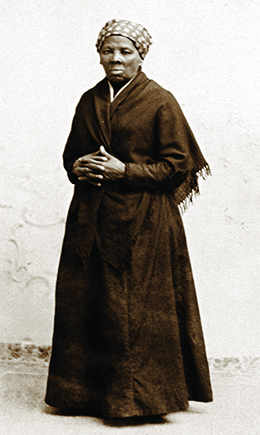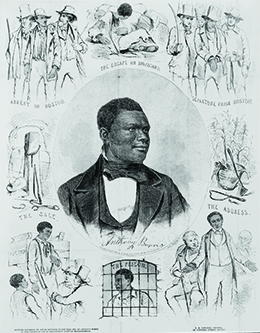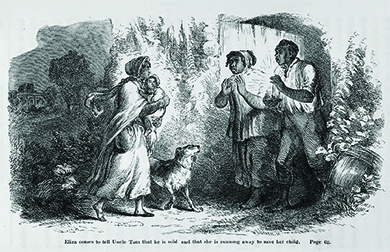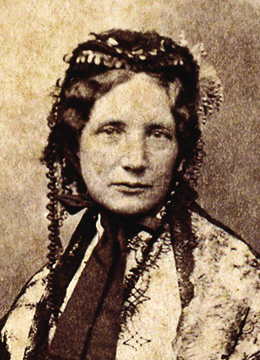| << Chapter < Page | Chapter >> Page > |
Harriet Tubman ( [link] ) was a legendary figure in her own time and beyond. An escaped slave herself, she returned to the South thirteen times to help over three hundred slaves through the Underground Railroad to liberty in the North. In 1869, printer William J. Moses published Sarah H. Bradford’s Scenes in the Life of Harriet Tubman . Bradford was a writer and biographer who had known Tubman’s family for years. The excerpt below is from the beginning of her book, which she updated in 1886 under the title Harriet, the Moses of Her People .

It is proposed in this little book to give a plain and unvarnished account of some scenes and adventures in the life of a woman who, though one of earth’s lowly ones, and of dark-hued skin, has shown an amount of heroism in her character rarely possessed by those of any station in life. Her name (we say it advisedly and without exaggeration) deserves to be handed down to posterity side by side with the names of Joan of Arc, Grace Darling, and Florence Nightingale; for not one of these women has shown more courage and power of endurance in facing danger and death to relieve human suffering, than has this woman in her heroic and successful endeavors to reach and save all whom she might of her oppressed and suffering race, and to pilot them from the land of Bondage to the promised land of Liberty. Well has she been called “Moses,” for she has been a leader and deliverer unto hundreds of her people.
—Sarah H. Bradford, Scenes in the Life of Harriet Tubman
How does Bradford characterize Tubman? What language does Bradford use to tie religion into the fight for freedom?
The Fugitive Slave Act provoked widespread reactions in the North. Some abolitionists, such as Frederick Douglass, believed that standing up against the law necessitated violence. In Boston and elsewhere, abolitionists tried to protect fugitives from federal authorities. One case involved Anthony Burns, who had escaped slavery in Virginia in 1853 and made his way to Boston ( [link] ). When federal officials arrested Burns in 1854, abolitionists staged a series of mass demonstrations and a confrontation at the courthouse. Despite their best efforts, however, Burns was returned to Virginia when President Franklin Pierce supported the Fugitive Slave Act with federal troops. Boston abolitionists eventually bought Burns’s freedom. For many northerners, however, the Burns incident, combined with Pierce’s response, only amplified their sense of a conspiracy of southern power.

The most consequential reaction against the Fugitive Slave Act came in the form of a novel, Uncle Tom’s Cabin . In it, author Harriet Beecher Stowe, born in Connecticut, made use of slaves’ stories she had heard firsthand after marrying and moving to Ohio, then on the country’s western frontier. Her novel first appeared as a series of stories in a Free-Soil newspaper, the National Era , in 1851 and was published as a book the following year. Stowe told the tale of slaves who were sold by their Kentucky master. While Uncle Tom is indeed sold down the river, young Eliza escapes with her baby ( [link] ). The story highlighted the idea that slavery was a sin because it destroyed families, ripping children from their parents and husbands and wives from one another. Stowe also emphasized the ways in which slavery corrupted white citizens. The cruelty of some of the novel’s white slaveholders (who genuinely believe that slaves don’t feel things the way that white people do) and the brutality of the slave dealer Simon Legree, who beats slaves and sexually exploits a slave woman, demonstrate the dehumanizing effect of the institution even on those who benefit from it.

Stowe’s novel proved a runaway bestseller and was the most-read novel of the nineteenth century, inspiring multiple theatrical productions and musical compositions. It was translated into sixty languages and remains in print to this day. Its message about the evils of slavery helped convince many northerners of the righteousness of the cause of abolition. The novel also demonstrated the power of women to shape public opinion. Stowe and other American women believed they had a moral obligation to mold the conscience of the United States, even though they could not vote ( [link] ).

Visit the Documenting the American South collection on the University of North Carolina at Chapel Hill website to read the memoirs of Levi Coffin, a prominent Quaker abolitionist who was known as the “president” of the Underground Railroad for his active role in helping slaves to freedom. The memoirs include the story of Eliza Harris, which inspired Harriet Beecher Stowe’s famous character.
The backlash against the Fugitive Slave Act, fueled by Uncle Tom’s Cabin and well-publicized cases like that of Anthony Burns, also found expression in personal liberty laws passed by eight northern state legislatures. These laws emphasized that the state would provide legal protection to anyone arrested as a fugitive slave, including the right to trial by jury. The personal liberty laws stood as a clear-cut example of the North’s use of states’ rights in opposition to federal power while providing further evidence to southerners that northerners had no respect for the Fugitive Slave Act or slaveholders’ property rights.
Go to an archived page from the Michigan Department of Natural Resources site to read the original text of Michigan’s 1855 personal liberty laws. How do these laws refute the provisions of the federal Fugitive Slave Act of 1850?
The difficult process of reaching a compromise on slavery in 1850 exposed the sectional fault lines in the United States. After several months of rancorous debate, Congress passed five laws—known collectively as the Compromise of 1850—that people on both sides of the divide hoped had solved the nation’s problems. However, many northerners feared the impact of the Fugitive Slave Act, which made it a crime not only to help slaves escape, but also to fail to help capture them. Many Americans, both black and white, flouted the Fugitive Slave Act by participating in the Underground Railroad, providing safe houses for slaves on the run from the South. Eight northern states passed personal liberty laws to counteract the effects of the Fugitive Slave Act.

Notification Switch
Would you like to follow the 'U.s. history' conversation and receive update notifications?